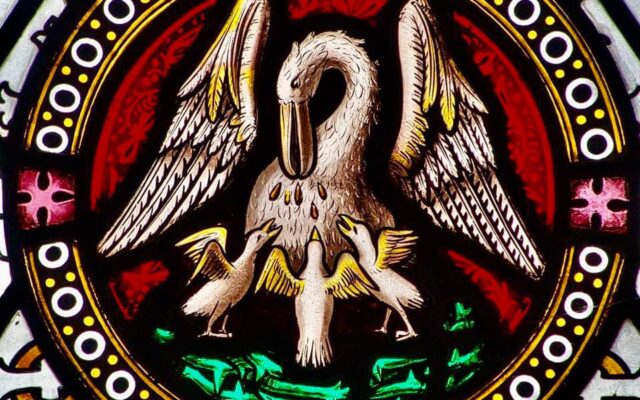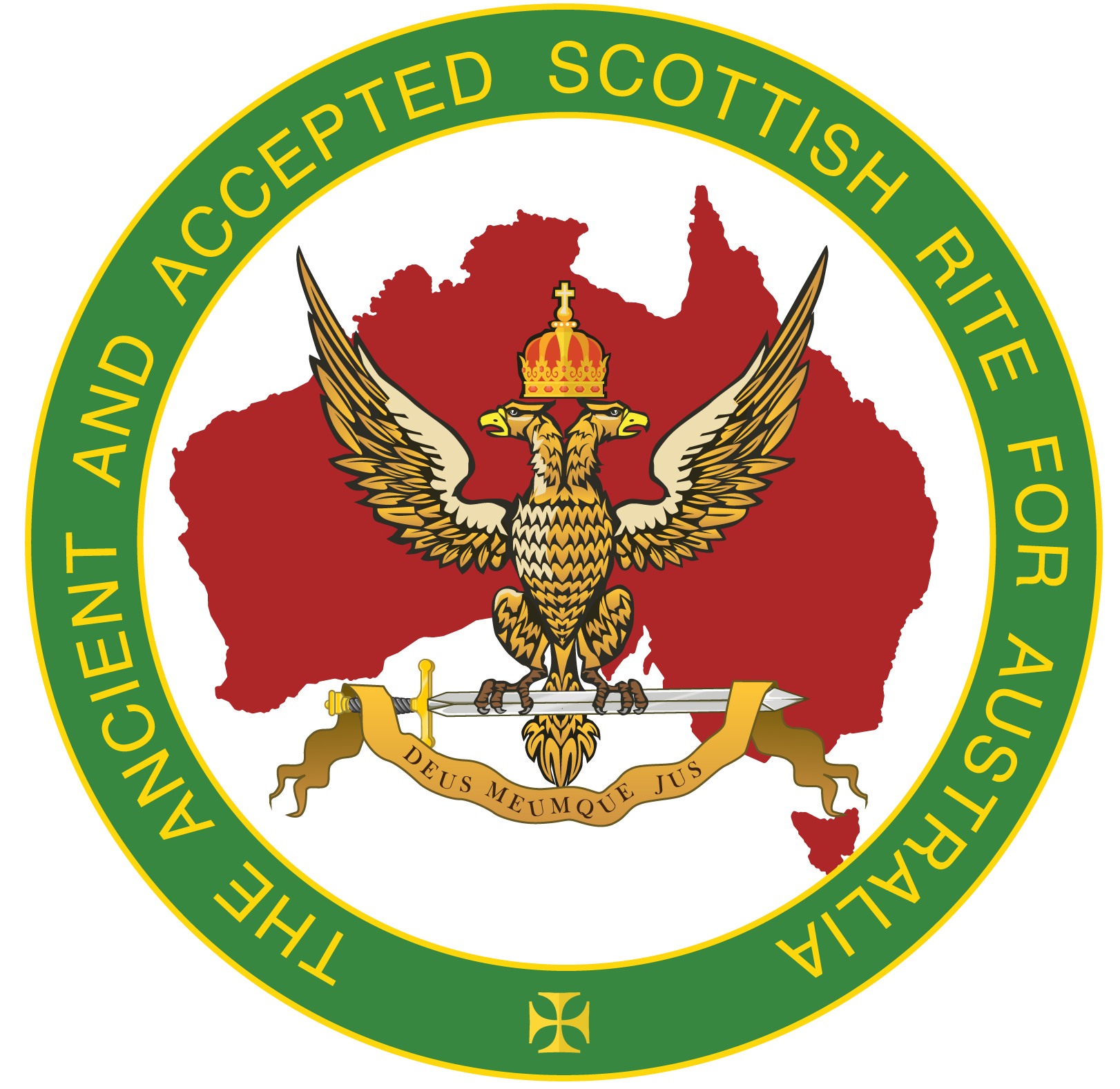
THE WORLD WIDE SPREAD OF
ANCIENT & ACCEPTED SCOTTISH RITE MASONRY
By M∴P∴BRO JACK BALL A.M. 33° PSGC
This is a reprint of a paper first presented in 1992.
Much of this information has come from the writings of V\Ill\Bro AC Jackson 33°, various publications and correspondence from V\Ill\Bro Sydney R Baxter 33° of the N.M.J. USA and from papers and conversations resulting from overseas trips to the Sovereign Grand Commanders’ Conference.
For the relevant dates of establishment and historical facts I’m indebted to a Publication entitled “A Register of Supreme Councils Active and Extinct” published in 1981 by George Draffen of Newington 33°, at that time Lieutenant Grand Commander of the Supreme Council for Scotland.
To set the scene for the birth and growth of the Rite, we must go back to the origin of Craft Masonry as we know it and trace its early development as an organised body.
Our story starts in the 1600s when Britain was slowly emerging from medieval times. Things changed very slowly in those days. The Middle Ages had lasted for more than 1000 years from the 5th to the 16th Centuries. The late 15th Century invention of the Printing Press had unleashed a thirst for knowledge across a much wider range of people and provided a means whereby men of education could transmit their thoughts and philosophies as never before.
In towns and villages throughout England, Scotland and Wales, men of learning and achievement came together in groups to speculate and learn from each other. In the newly emerging urbanisation, a need to teach men their duties to each other in this new system of Society led to the Speculative Lodges. These Lodges, at first without form, gradually evolved and developed a similarity as our beautiful ritual was brought to life, written and re-written, amended and evolved.
In 1717 the first formal organisation of Lodges occurred with the formation of the Grand Lodge of England. On the 24th June 1717 representatives of four Lodges met at the Goose and Gridiron Tavern near St. Paul’s Churchyard in London.
The Order comprised only two degrees at that time ~ the “Apprentice” Degree and the ‘Fellow of the Craft” Degree. It was not until about 1730 that the 3°, the “Master Mason” Degree gradually came to be accepted.
The period was one of great religious intolerance and persecution, mainly as a result of the Jacobean “disturbances” and problems and a number of Scottish and English Masons left Britain and settled in France. At that time Bordeaux was apparently the oldest and main Masonic Centre in Europe and there in 1732 “Loge L’Anglais” was established by British Masons.
More than 50 daughter Lodges sprang from this “Loge L’Anglais” and these gave rise to a great proliferation of Degrees. With time these came to be grouped together and resulted in the progenitors of our Rite. The first identifiable group became known as the Rite of Perfection, comprising 25 Degrees, in the mid-1750s, a decade later.
Our story of the development of the Rite then splits into two streams with the physical migration of the Rite to the New World and the further development of the Rite into a more formal body In Europe.
In 1761 Etienne Morin, bearing Letters Patent of his Authority from the Grand Master and Protector of all Lodges HRH, and V\Ill\Bro Louis De Bourbon, Compte de Clermont, left France for the West Indies. Morin took two years to complete the journey having first to survive capture of the ship in which he was travelling by the British and his subsequent imprisonment in England.
Waiting for him on his arrival in St. Domingo in 1763 were documents entitled “The New Statutes and Regulations made by the 14 Commissioners on the 25th November, 1762”, now known as the “Constitutions of 1762”. Almost immediately Morin appointed Henry Franken as a Deputy Grand Inspector General and over the next eight years they worked on laying down the Rituals of the 15° to the 25°.
This document is now in the care of the Supreme Council Library, London. Morin died in 1771 and Franken continued his Ritual work. By 1783 Franken had completed all the Rituals from the 4° to 25°, the manuscripts of which are now in the archives of the Northern Masonic Jurisdiction, U.S.A. in Boston, Mass.
Of particular interest to us is the history of the 18°. This appears to have entered the French Rite of Perfection in about 1750 and the Degree, according to Franken’s Rituals, was called the “Knight of the White Eagle or Pelican or Knight of the Rose Croix”.
By 1770 the Rite had spread to a number of centres along the Atlantic Coast of the U.S.A. reaching as far north as New York and Albany in New York State.
In 1783 in Charleston, South Carolina, a Lodge of Perfection was probably established followed in 1788 by a Council of Princes of Jerusalem.
In 1795 Compte De Grasse-Tilley, his father-in-law Delahogue and their families arrived in Charleston from San Dominigo. Two years later, with French colleagues, he formed a Consistory of the 25° and so Charleston had become a centre for the development of the Higher Degrees in the New World. The necessary developments were in place for the subsequent establishment, four years later, of the first Supreme Council in the World.
At this time it is important to note the developments being made in Europe while the New World activities were taking place.
First there was the birth of the “Chapter of Clermont” in France, possibly the Cradle of the Rite. It was founded in Paris in 1754 by Christopher De Bourneville and it had only a short life of four years.
From it, in 1758, came a “Council of Emperors, of the East and West” which had a Rite of 25° called the Rite of Perfection. Its full title was “Le Conseil des Empereurs d’Orient et D’Occident Grande et Souveraine Loge Eecossais de St. Jean de Jerusalem”.
The formation of this body is considered to have formed the basic structure for the eventual development of the Grand Constitutions.
The drafting of this Grand Constitutions was over/under the alleged signature of Frederick the First of Prussia and nine other Commissioners of whose signatures only four are now legible. These documents not only laid down the procedures for the government of the Rite, both internationally and within each Supreme Council, but they also expanded the Rite from 25 to 33 Degrees by adding a further eight Degrees.
Strangely, this, the most important document of our Rite, was not made public at the time. No original copy has survived and its existence only became known over a period of time. The earliest reference to it is in the statement made at the time of the establishment of the Charleston Supreme Council – that it had been established under Article 2 of the Grand Constitutions of 1786. It is on this basis that our Supreme Council is recognised as the first Supreme Council 33° to be established in Australia.
As a footnote to these developments, Morin and Franken had in 1770, some 30 years earlier, set up in Kingston Jamaica a Grand Chapter of Sublime Princes of the Royal Secret. In 1804 it became the Supreme Council for the British West Indies under Warrant issued by the Supreme Council for the Southern Masonic Jurisdiction U.S.A. It became extinct by 1816.
Therefore by the start of the 1800s, all the foundations of our Order, as it exists to-day, had been laid. But the wheel had one more turn to make. Our story now takes us back to France.
In 1804 de Grasse-Tilley arrived back in France, filled with zeal, to establish in Europe the new structure of the Rite under Article 2 of the Grand Constitutions of 1786. Within months he had established a Supreme Council 33° for France.
Having organised France, de Grasse-Tilley travelled to Italy and set up, a year later, the first Supreme Council in that country. Spain was next. Francisco Guzinan founded a Supreme Council for Spain under Article 2 of the Grand Constitutions of 1786, in the city of Aranjuaz. Two and a half years later the energetic Conte de Grasse-Tilley succeeded in setting up a rival Supreme Council in Madrid which was suppressed by King Ferdinand after 3 years. It was revived 5 years later in 1818 and then amalgamated with the Original Supreme Council for Spain. It is interesting to note that this Supreme Council, the fourth oldest in the world was banned by
Franco in 1939 went into exile in Mexico and finally returned from exile in 1978, some 39 years later and now flourishes again.
The Northern Masonic Jurisdiction of the USA, then based in New York, was established in 1813. Belgium was founded in 1817 by Jean-Pascal Royer and was known as “The Supreme Conseil les Pays-Bas” or Low Countries. Three months later that old war-horse de Grasse-Tilley, set up a rival Supreme Council which in December of the same year amalgamated with the original one. In 1830 it was re-named “Supreme Conseil pour la Belgique”.
The next 30 years saw Supreme Councils in seven nations constituted:
Venezuela in 1824, Brazil in 1826, Ireland in 1826, Columbia in 1827, Peru in 1830, England in 1845, Scotland in 1846.
The second half of the 1800s saw by far the most vigorous growth of the Rite with some 15 of the Present Supreme Councils coming into existence.
The Fifties saw Uruguay in 1856, Argentina, Cuba and Denmark in 1858 and in the Sixties, Mexico in 1860, Dominican Republic and Turkey in 1861.
In the Seventies, seven new Councils were born: Chile in 1870, Central America (Guatemala), Costa Rica and Paraguay in 1871, Greece in 1872, Switzerland in 1873 and Canada in 1874. The final one of that century was Norway in 1891.
The 20th Century, disturbed and distressed by so much war and civil strife saw a much slower growth.
In 1910 Ecuador was founded, the Netherlands and Panama in 1913, Austria 1925, Germany 1930, and Bolivia 1931.
The first half of the 20th Century closed with the establishment in 1949 of the Supreme Council of the Philippines.
A further nine Supreme Councils have been established in the second half of the Century: Iceland in 1951, El Salvador and Honduras in 1960, Nicaragua in 1961 and in Israel 1966.
In the Seventies it was Iran in 1970 (now in exile), Finland in 1973, Luxemburg in 1976 and finally Australia in 1985.
The Order in Australia commenced slowly. The first Sovereign Chapter was established in 1859 when the Supreme Council for England and Wales granted a Charter to a Victorian Chapter in Melbourne.
Twenty years elapsed until the next Chapter was chartered and this was by the Supreme Council for Scotland. This chapter met in Brisbane, Queensland for the first time in 1879.
Another decade passed and it was not until 1889 that the second chapter established by the Supreme Council for England and Wales received its charter. This took place in Adelaide, South Australia. The first charter to be issued to a Sovereign Chapter in New South Wales was to Sedgwick Chapter in 1892.
Our Australian Supreme Council was recognised as a regular Supreme Council when it was established in 1985. The Charter was issued jointly by the Supreme Council of England and Wales and the Supreme Council of Scotland.
Summarising then: the geographical spread of the Rite and the grouping of Supreme Councils in the following Regions are:-
North Americas 3 Latin Americas 18
European incl Scandinavia 31 United Kingdom 3
Africa 3 Middle East 4
Pacific Area 4
The European Sovereign Grand Commanders generally meet annually. The English Speaking every four years, the Latin Americas approximately four yearly and each five years there is a World Conference. These meetings are consultative bodies only and any decisions are taken are subject to confirmation by each recognised Supreme Council.
